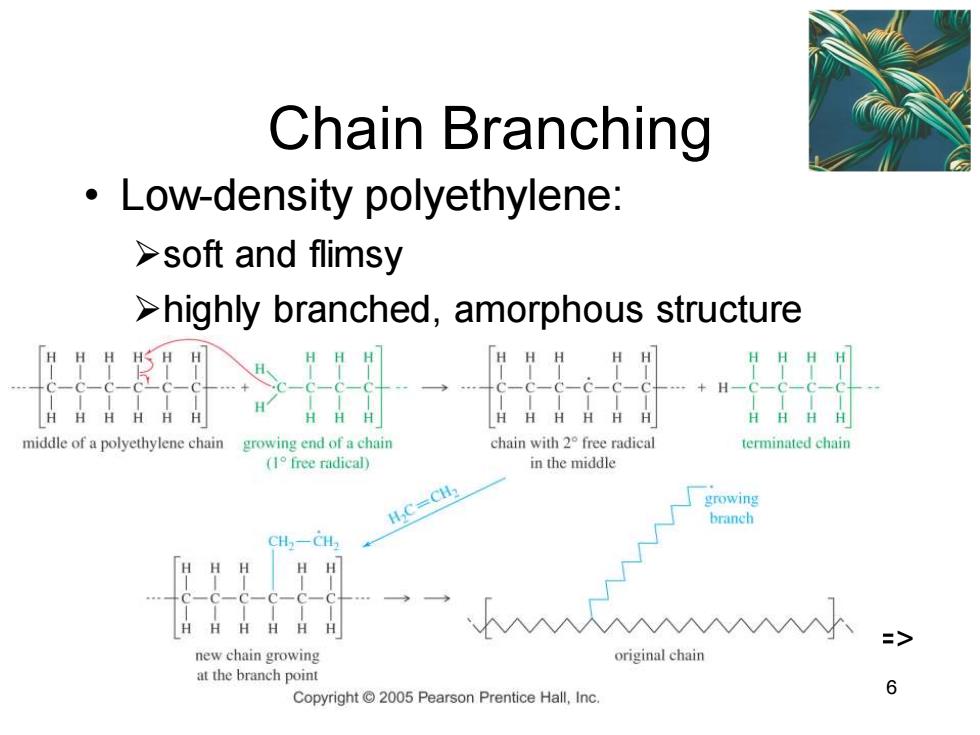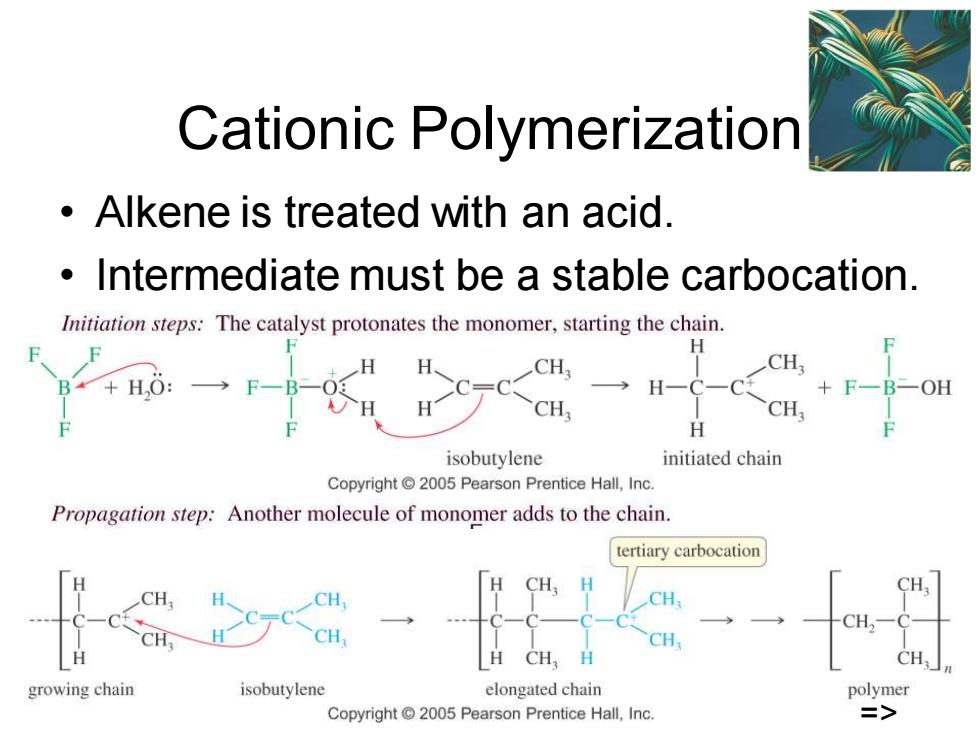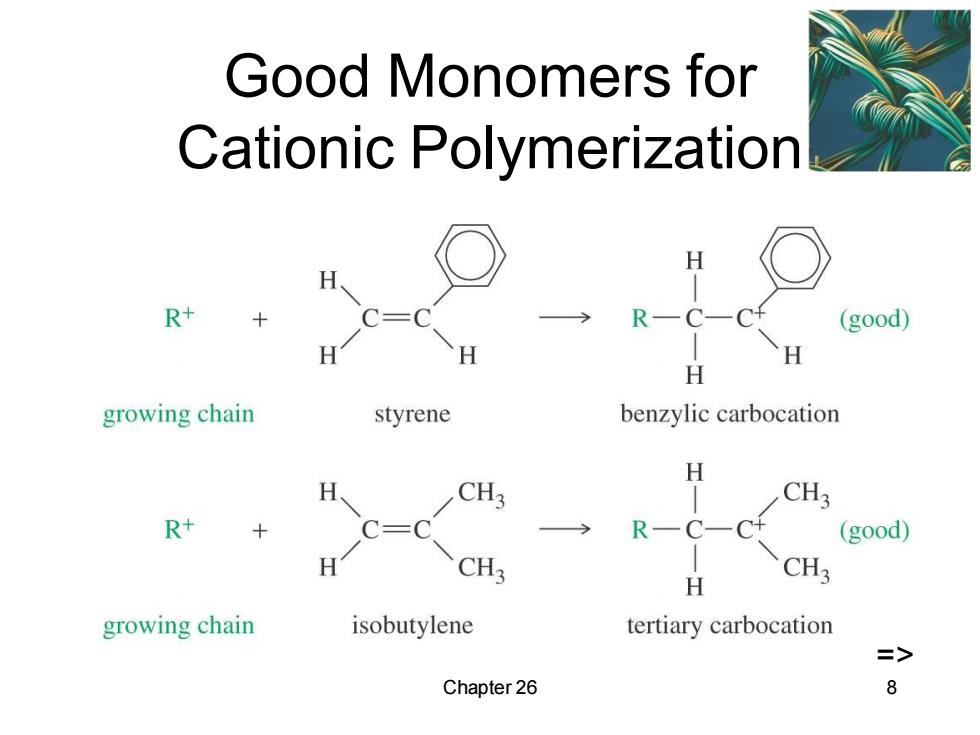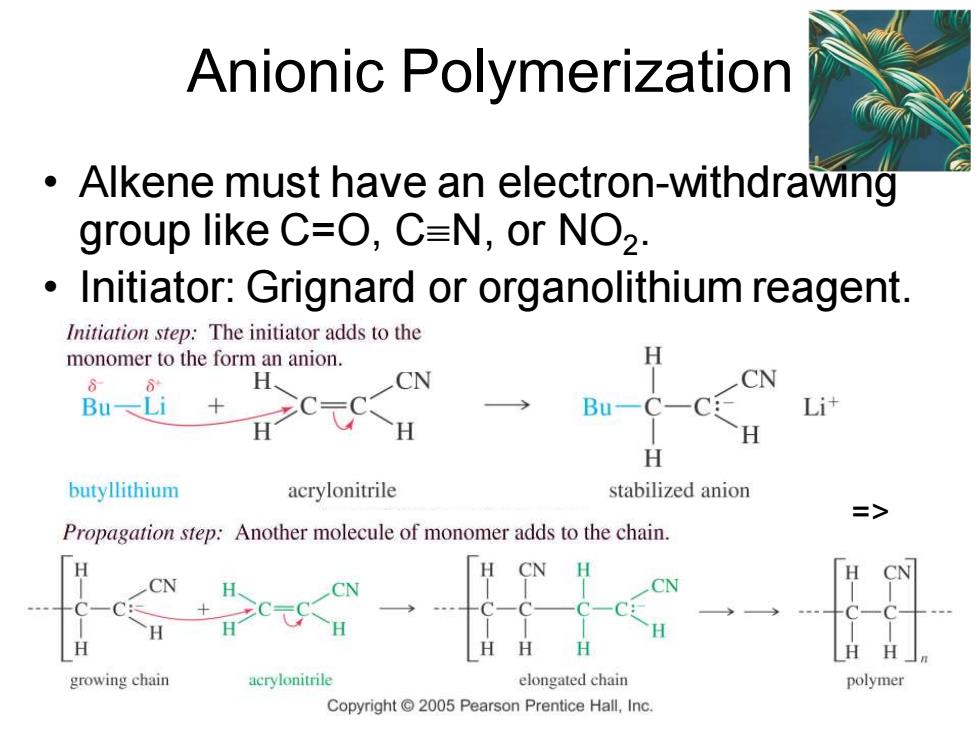
Chain Branching Low-density polyethylene: >soft and flimsy >highly branched,amorphous structure middle of a polyethylene chain growing end of a chain chain with 2 free radical terminated chain (1 free radical) in the middle H,C=CH2 growing branch CH2一CH new chain growing original chain at the branch point 6 Copyright 2005 Pearson Prentice Hall,Inc
Chapter 26 6 Chain Branching • Low-density polyethylene: ➢soft and flimsy ➢highly branched, amorphous structure =>

Cationic Polymerization Alkene is treated with an acid. Intermediate must be a stable carbocation. Initiation steps:The catalyst protonates the monomer,starting the chain. H CH, CH B*+HO: +F一B一OE CH. CH H isobutylene initiated chain Copyright 2005 Pearson Prentice Hall,Inc. Propagation step:Another molecule of monomer adds to the chain. tertiary carbocation CH CH CH CH CH H CH,H CH. growing chain isobutylene elongated chain polymer Copyright 2005 Pearson Prentice Hall,Inc. 三>
Chapter 26 7 Cationic Polymerization • Alkene is treated with an acid. • Intermediate must be a stable carbocation. =>

Good Monomers for Cationic Polymerization H R+ R—C-C (good) H growing chain styrene benzylic carbocation H CH3 CH3 R+ C= R一C一 (good) CH3 CH3 H growing chain isobutylene tertiary carbocation => Chapter 26 8
Chapter 26 8 Good Monomers for Cationic Polymerization =>

Anionic Polymerization Alkene must have an electron-withdrawing group like C=O,C=N,or NO2. Initiator:Grignard or organolithium reagent. Initiation step:The initiator adds to the monomer to the form an anion. H、 CN CN Bu-Li Bu- H H butyllithium acrylonitrile stabilized anion 三> Propagation step:Another molecule of monomer adds to the chain. H growing chain acrylonitrile elongated chain polymer Copyright 2005 Pearson Prentice Hall,Inc
Chapter 26 9 Anionic Polymerization • Alkene must have an electron-withdrawing group like C=O, CN, or NO2 . • Initiator: Grignard or organolithium reagent. =>